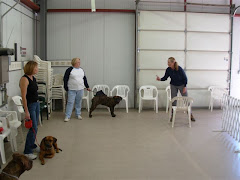By the time I got the message, five hours had passed. I called Charlie back right away. His dog was just fine. She wasn't exhibiting any signs of distress whatsoever. Charlie suspected that the tinged water in the bucket was just dirty rainwater. He and his dog were both very lucky!
Spring and fall are typical times of year for antifreeze poisoning, which kills about 10,000 cats and dogs annually. As we add or change the coolants in our cars for these seasons, we're likely to spill a little on the garage floor or driveway, or leave an open container of it sitting around. Dogs and cats are attracted to its sweet taste, and they will readily lap it up. Tragically, even a tiny amount of this sweet-tasting product (ethylene-glycol) can be lethal!
Antifreeze poisoning occurs in two stages: In the first stage, the ethylene glycol in the antifreeze causes a drunken appearance in the animal within about 30 minutes which may continue for several hours. After passing through stage 1, the animal appears to recover. Stage 2 begins when the dog's liver begins metabolizing the ethylene glycol, changing it into more toxic substances. Within 12 to 36 hours of ingestion, these metabolites have reached such a level that the dog's kidneys stop functioning, and the animal slips into a coma.
When you or a member of your household changes antifreeze in the driveway, be sure to collect all of the waste coolant and properly dispose of it. And never leave a bucket of ethylene-glycol coolant unattended - even for a moment. Also remember that your car can leak coolant at any time. If you see a puddle of greenish-colored liquid in your driveway, flush the area with plenty of water and don't delay locating and fixing the leak. Another method of quick clean-up is to spread cat litter on the spill, clean up with rags (which are bagged immediately) and then rinse. Antifreeze will biodegrade in the environment, but it takes weeks or months to do so.
Getting the dog to a veterinarian is critical within the first 9-12 hours following ingestion. After that length of time, the liver will have already begun metabolizing the ethylene glycol into substances that cause kidney failure and ultimately death.
Symptoms of antifreeze poisoning include a drunken appearance including staggering, lack of coordination, and apparent disorientation and vomiting. The animal may appear listless and depressed. Because early signs of antifreeze poisoning often mimic signs of other illness, neither you or your veterinarian may suspect antifreeze poisoning until it is too late.
You can induce vomiting as first aid, if you even remotely suspect antifreeze poisoning. Hydrogen peroxide will make a dog throw up in a matter of minutes. Have someone clean up the dog's upchuck so another dog doesn't lap that up and also get poisoned...yes, it's happened. Meanwhile, you should be off to the vet, who can administer an antidote if you are in time. But your window of opportunity is short. Do not wait. Go immediately.


















No comments:
Post a Comment